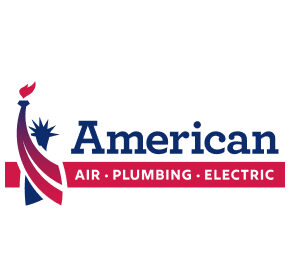Using a portable humidifier in your Oviedo, Florida home is a quick and easy way to alleviate stuffy nasal passages, a sore throat, or dry, itchy eyes. However, portable humidifiers require diligent cleaning and maintenance. More importantly, they can’t add sufficient humidity to more than one room. If you suffer from constantly dry indoor air, you may need a whole-house humidifier instead. Read on to find out more about what these units are, how they work, and whether having one installed is the right choice for you.
What’s the Difference Between a Whole-House Humidifier and a Portable Unit?
Portable humidifiers are simple, standalone alone units that can add moisture to a single room. You might set one of these units up on your nightstand, dresser, or bedside table. Whole-house humidifiers are integrated HVAC accessories that are installed directly within HVAC systems. A whole-house humidifier can be attached to a forced-air furnace at its main stack, or it can be positioned in the return air ducts where it will add moisture to heated air before it’s distributed.
Another major difference between portable and whole-house humidifiers is their primary function. Portable units merely add moisture to the indoor air. Whole-house humidifiers measure indoor moisture and regulate it. They have built-in hygrometers for taking these measurements that portable units lack. These humidity sensors allow homeowners to establish a preferred level of indoor humidity so that whole-house humidifiers can adjust their performance accordingly.
Whole-house humidifiers require professional service annually. Comparatively, a portable unit must be emptied and sanitized about once every three to five days. Without this level of diligence, there’s a high likelihood of having mold form within a portable unit, and then having this mold gets distributed throughout the room.
Why Whole-House Humidification Is Better Than Using a Portable Unit
If you have dry air throughout your entire house, attempting to resolve it by setting up several portable humidifiers can prove problematic. Not only will cleaning and maintaining multiple units prove far more challenging than caring for just one, but there will also be the very real risk of adding too much moisture to your indoor air. Without built-in hygrometers, these units constantly release moisture whenever they have full tanks and are turned on. This can lead to wet drywall, condensation on your windows, and an increased likelihood of mold.
Finally, whole-house humidifiers can last up to 10 years, while portable models must be replaced after just three years of regular service. Thus, if you want a simple, cost-effective solution to dry indoor air that doesn’t require a lot of effort on your end, having a whole-house humidifier added to your HVAC system is the best choice.
The Symptoms of Excessively Dry Air
Dry air is a normal occurrence during winter. Cold air holds less moisture than warm air. As your indoor temperature drops, moisture levels in your home will invariably decline. However, dry air is also a side effect of using a central heating system. Forced-air heating systems dry the interior of buildings out whenever they’re actively producing and distributing heat. This problem is further compounded when building residents light real wood fires in their fireplaces or engage in other activities that deplete moisture.
Nasal congestion and sinus irritation are two common signs of dry indoor air. Problems with stuffy nasal passages, sinus headaches, and even nosebleeds can persist all winter long if nothing is done to remedy their cause. Moreover, these issues tend to be worse during the nighttime hours when heaters are constantly running.
Other physical symptoms of dry indoor air include:
- Dry, watery eyes
- Sore throat
- Frequent illnesses
- Dry skin, hair, and lips
Dry indoor air can additionally cause breathing trouble. This is especially true for building residents with chronic respiratory issues. Dry air can trigger asthma and allergy attacks. It can also exacerbate serious illnesses such as sinusitis and bronchitis.
How Dry Air Affects Your Home
Dry air can have a noticeable impact on building materials, too. For instance, you may have cracked paint throughout your home or wood elements that are warped. Check for separated or raised boards on your wood floor, and make sure that wood paneling and other real wood elements are still straight and flush. Having adequate moisture inside of your house is essential for preserving the integrity of these elements and protecting the value of your investment.
Static Electricity
Dry air also leads to high levels of static electricity. If you’re constantly getting shocked when touching indoor surfaces or when bumping into other residents, insufficient moisture could be the reason why. Although this might be a minor annoyance when compared to nosebleeds, sinus headaches, and breathing difficulties, it’s an excellent indicator of dry air problems.
Adding Moisture to Your Air Could Limit the Spread of Illness
Many consumers are surprised to discover that having excessively dry indoor air can contribute to the spread of illness. Although having too much moisture indoors gives bacteria, viruses, mold, mildew, and many other pathogens the perfect environment for multiplying, overly dry air does much the same.
Dry air allows viral droplets from sneezes and other emissions to quickly break down into micro-fine aerosols. As a result, they’re able to float around the living environment longer, and they have a higher likelihood of affecting building residents.
You Can Improve Your Sleep Quality With Whole-House Humidification
Another good reason to consider investing in a whole-house humidifier is insufficient or low-quality sleep. If you haven’t been resting well, imbalanced humidity could be the cause. Dry indoor air makes it difficult to rest easy and breathe deeply the whole night through. This is all the more true if you’re dealing with itchy skin, irritated eyes, or other dry air symptoms. People with sleep apnea and other breathing-related sleep troubles can greatly improve their quality of sleep by simply adding the right amount of moisture to their indoor air.
Spend Less Money to Keep Your Home Warm
If your home heating bills are on the rise, this could be another good reason to shop for a humidifier. Moist air feels warmer than dry air. With balanced humidity, you can set your thermostat a bit lower and still feel comfortable. When the living environment feels cold and dry, people tend to crank up their heaters. Raising thermostat settings when central heating is the cause of drier than normal air creates a never-ending cycle of problems.
Just as every home needs a functional heating and cooling system, every house should also have balanced indoor humidity. Ideally, your home should have a humidity level that falls between 30% and 50%. If you’re experiencing the symptoms of dry air or if your home’s basic building materials are starting to show signs of excessive wear, we can help. Humidity testing will tell you what your house’s moisture level is and which factors are likely causing humidity problems.
We offer air conditioner and heater installation, repair, and maintenance services. We also provide air duct cleaning and indoor air quality services. If you need help balancing the humidity levels in your Oviedo, FL home, we’ve got you covered. Call American Air, Plumbing, and Electrical today to schedule an appointment.


